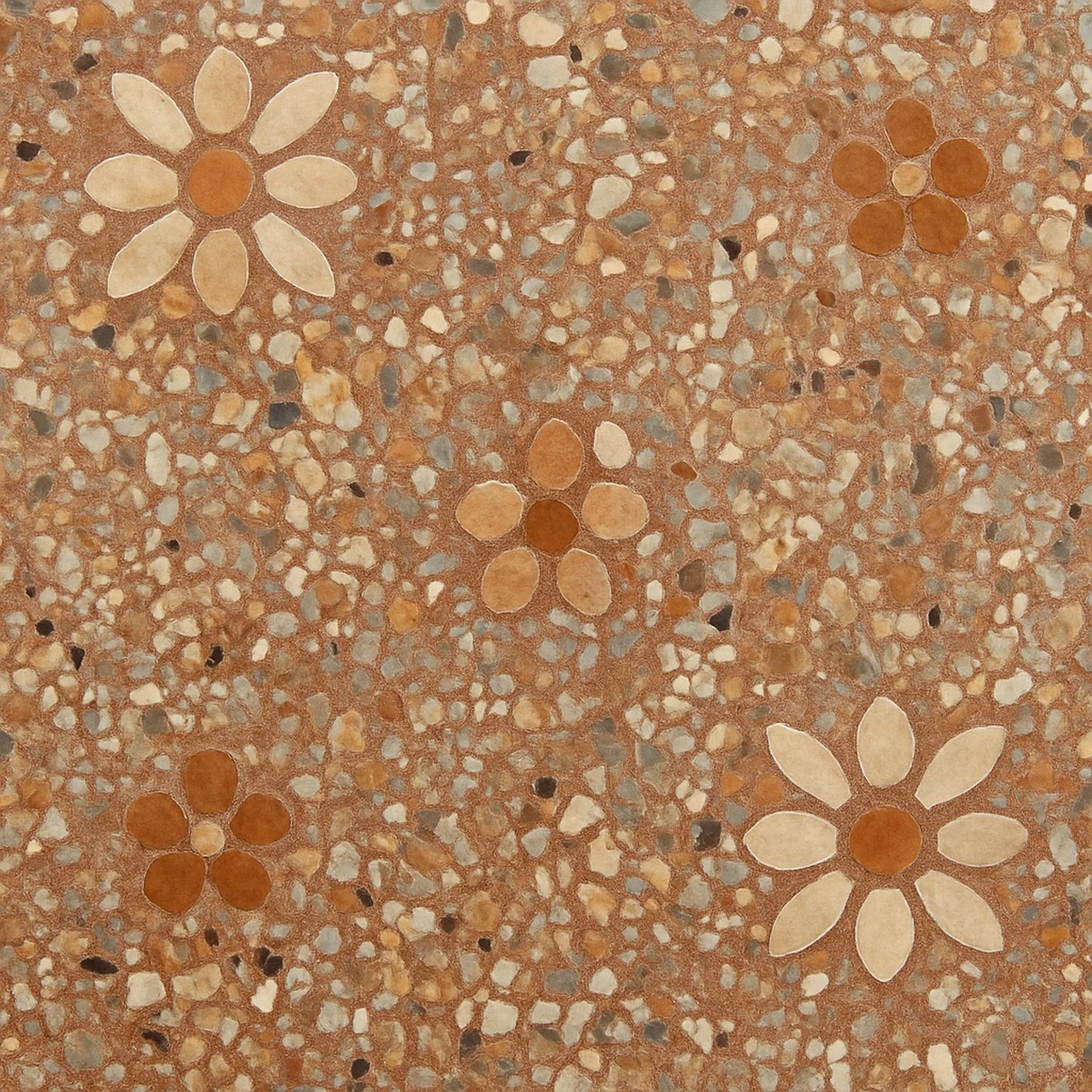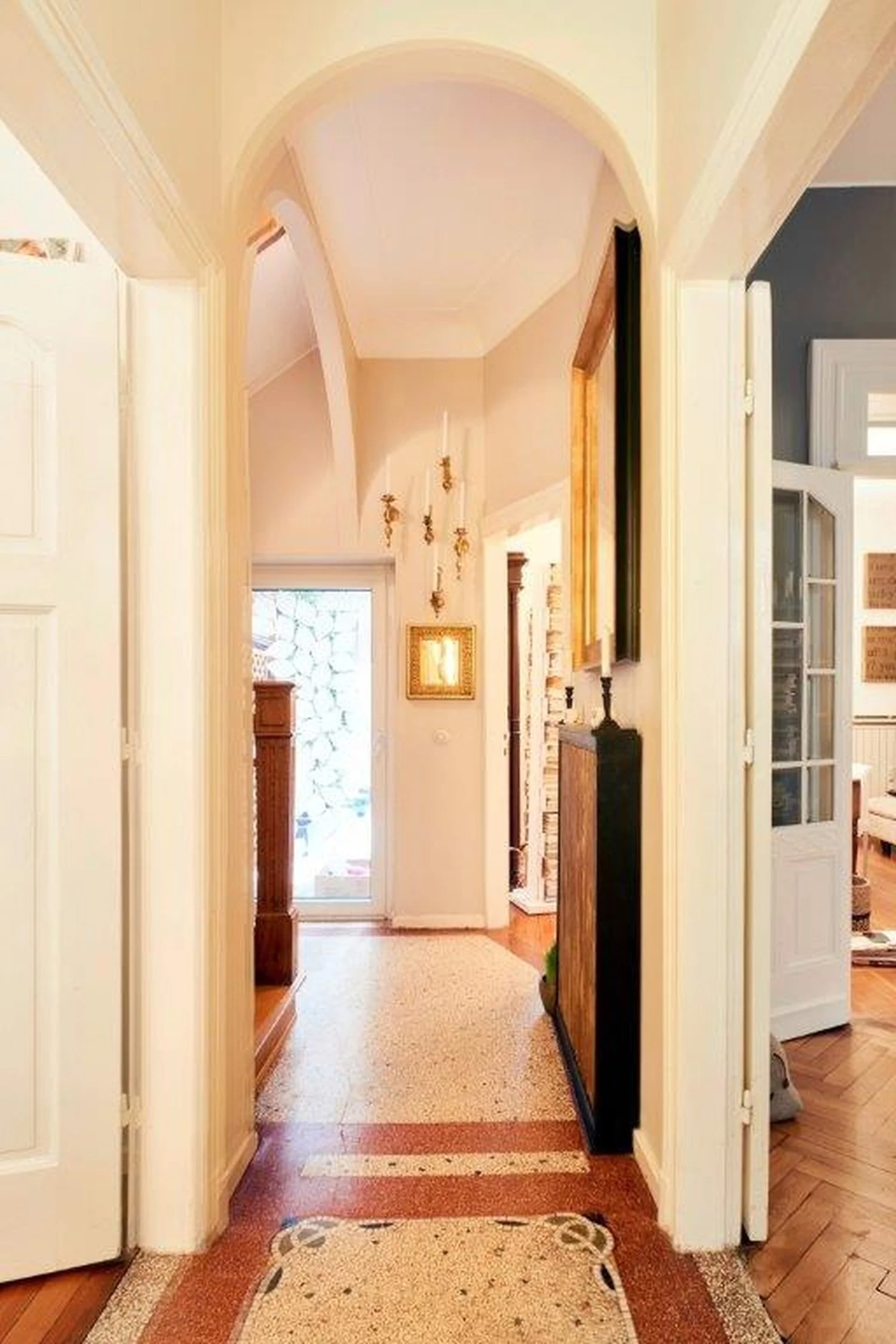Our first house in Luxembourg, built in 1912, had one of those floors that made you pause mid-step. Cool underfoot, shimmering in the sunlight, colours of the different floral patterns shifting with the light, and somehow more expressive than the walls around it. A terrazzo floor. Original. Worn. Glorious.
When we had it restored, the craftsman told me something that stuck: "Back then, they worked on a terrazzo floor for months. Today? A few days, max." The restoration process was fascinating as well. They used whenever possible original little stones in the same colours we had, so most often, these were antique stones, salvaged from other terrazzo floors which could not be rescued.
And just like that, I saw it differently, not just as a beautiful surface, but as a forgotten monument to time.
The terrazzo floor looked even more stunning after it was restored. After the final polish, I could not believe it, the vibrant colours, all came back to life, more intense, and I could imagine how it must have looked the day it was first completed, over a hundred years ago.
A Brief History in Stone and Cement
Terrazzo has been around since the Venetians swept their marble scraps into patterns and sealed them with goat’s milk (yes, really). It was the humble by-product of opulence, an elegant way to reuse what the grander palaces discarded.
Over the centuries, it evolved. By the early 20th century, it had made its way into bourgeois foyers and institutional hallways alike. In the 1920s and 30s, it was prized for its durability and Deco flair. In the post-war years, it became a staple of modernist architecture: sleek, hygienic, democratic.
But somewhere along the way, terrazzo got a reputation problem. Too cold. Too utilitarian. Too… public school corridor.
Until now.
The Comeback of Terrazzo
Terrazzo is back. Not just on floors, but on countertops, tiles, lamp bases, and even wallpaper. Sometimes it’s real, sometimes it’s a pixelated print. Sometimes it’s heartbreakingly beautiful. Sometimes, let’s be honest, it looks like confetti after a bad party.
But when it’s good , really good, it’s a reminder of what design can be: durable, decorative, and deeply rooted in craftsmanship.
Today’s terrazzo is mostly fast and flexible. But the old floors? They were laborious compositions. Marble, quartz, and granite fragments, hand-placed, hand-polished, and sealed in cement. Not just a finish, but a philosophy. A commitment to time.
Why It Still Matters
In a world obsessed with instant transformation, terrazzo whispers a slower truth. It’s not just a surface - it’s a memory map. A celebration of patience. A meditation in minerals.
I still think about our 1912 floor. How it outlasted every owner and every trend. How it held its history in chips and specks and swirls.
And I wonder what we’re leaving behind now - in a world of click-and-go tiles and weekend renovations.Because some things… are worth waiting for. And I savoured every minute I could spend with that terrazzo floor.
It was a joy to walk on every day and I very much miss it and hope that the new owners of our former house, treasure it as I did.
The original terrazzo floor in our 1912 former home, restored with antique stone and immense care - a reminder that some things are worth preserving.
written by Helen M. Krauss

